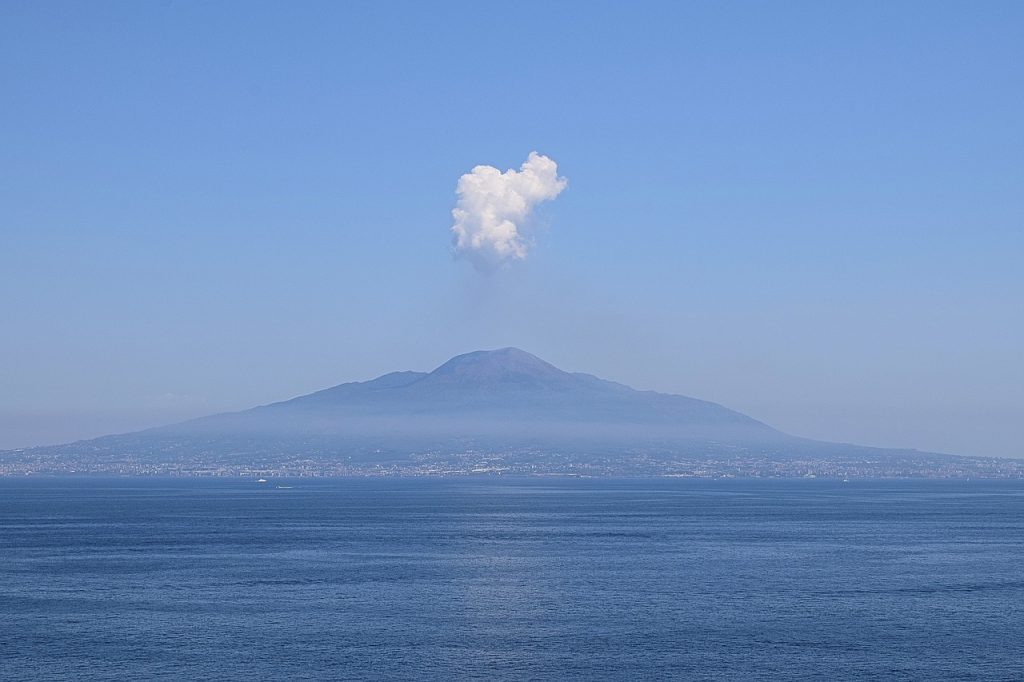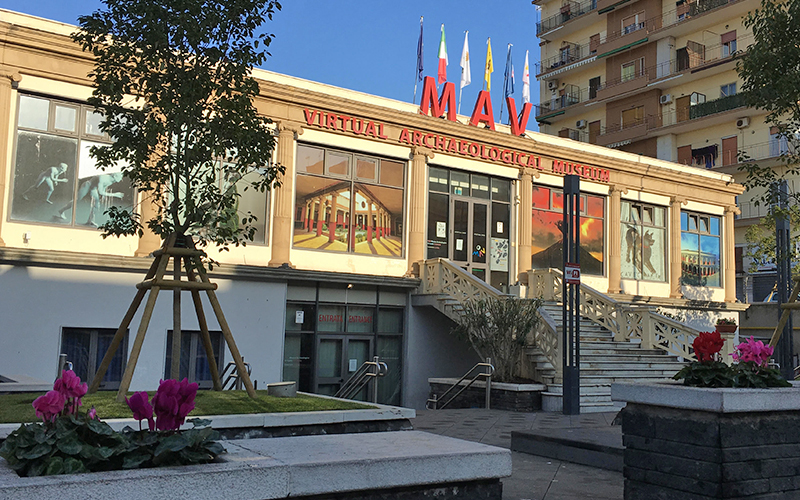Ercolano is a town in the Campania, in the province of Napoli. Formerly called Herculaneum, it became Resin from the Middle Ages until 1969. Buried by lava in 79 AD. C., following the devastating eruption of Vesuvius, is world famous for its archaeological excavations, which together with those of Pompeii and Oplontis, are a UNESCO World Heritage Site. The ancient town is located about 30 meters below the modern one. Excavations have brought to light only a part of the ancient city. Much of it it is still buried underground and houses, among other works, the sacred and civil buildings with their precious furnishings and decorations. Archaeological excavations attract around 350 thousand tourists every year.
Legend has it
Herculaneum, according to a legend narrated by Dionysius of Halicarnassus, was founded by Hercules in 1243 BC History, on the other hand, attributes its foundation to the Osci, in the 89th century BC, or the Etruscans, between the 62th and 79th centuries BC The city passed under the dominion of the Greeks, Samnites and Romans . With the latter, in XNUMX BC, it was enriched with new buildings. Among these: the Basilica, the Theater and two spa complexes. In XNUMX d. C. suffered serious damage due to the earthquake of Pompeii and, in XNUMX AD it was completely buried by the eruption of Vesuvius.

The eruption of 79 AD
The history of ancient Herculaneum stopped with the terrible eruption of Vesuvius on 24 August 79 AD On that occasion, a column of volcanic material reached 14 kilometers in height, releasing a rain of lapilli and pumice that settled on the city and on the neighbor Pompei. Burning clouds and mudslides buried Herculaneum together with its people, who could not do anything to save themselves. Over time, the layered materials solidified protecting the remains of the ancient city. The eruption canceled the promontory on which it stood, the river that crosses it and the ports.
From Herculaneum to "Resina"
On the city of Herculaneum, hit by the eruption, life began to slowly resume in 121 AD. Meanwhile, the whole area around Vesuvius was exposed to the numerous wars between the peoples who invaded the empire. In the XNUMXth century there are the first references to a farmhouse in Resina or Risina. Various hypotheses are made about the origin of the name. Some scholars attribute it to Rectina, a Roman patrician who owned a villa in the city and asked for help from Pliny the Elder on the occasion of the eruption of 79 AD According to others, the name derives from “retincula” (the nets used by local fishermen), or from the resin of the trees of the woods grown on the ancient lavas. Still others attribute it to the name of the river that flowed on the edge of the city. Finally, there are those who see in Resina the anagram of a siren, symbol of the farmhouse and of the Municipality until 1969, when the city of Resina assumed the ancient toponym of Herculaneum.
A casual rediscovery
The rediscovery of Herculaneum, many centuries later, was completely accidental. In 1710, a peasant, such Ambrose Nucerinus, digging a well to irrigate his garden, he recovered fragments of marble which, it became known later, belonged to the theater of the ancient city. The Prince of Elboeuf, Emanuel – Maurice of LorraineUpon hearing the news, he wanted to buy the land and, at his own expense, had excavations carried out in the area. These brought to light nine statues that he sent as a gift to friends, relatives and rulers of Europe.

Charles III of Bourbon starts the explorations
However, we must wait until 1738, with king Charles III of Bourbon, to see systematic explorations of ancient Herculaneum tunnels carried out. In 1740, driven by the success of the findings, the king had a royal palace built near the excavations: the Real Villa of Portici. In a wing of the building, which he called Herculanense Museum, he had the archaeological finds kept. One of the most important archaeological discoveries was The Villa dei Papiri, from which a priceless treasure of sculptures and the papyrus library were recovered. It is a real art museum and a library of writings chosen by a philosopher of the time: the epicurean Philodemus. With the arrival of the royals in Portici, the aristocracy of the capital chose to build sumptuous summer residences along the Via Regia delle Calabrie and in the surrounding countryside. The quantity and beauty of the buildings was such that that stretch of road was called the Golden mile. In 1755, following the many discoveries, the Ercolanense Academy was born, which was active until 1792 in the field of publications.

The resumption of excavations in the twentieth century
At Herculaneum the excavations were interrupted and then resumed, first below Francis I of Bourbon and then at the behest of Vittorio Emanuele II. Only in 1927 did we witness a truly systematic resumption of the excavations, which were directed by Amedeo Maiuri. They made it possible to free a large part of what is now the archaeological park. Maiuri first and then Alfonso De Franciscis recovered almost all the districts of the old town with the public buildings, including the forum, the center of the social, political and economic life of ancient Herculaneum. In the XNUMXs, in addition to the Temple of Venus and the Suburban Baths, the ancient port where the inhabitants took refuge during the eruption re-emerged. One hundred and twenty bodies were also found on the adjacent beach.

The new city
The modern Herculaneum has over 51 thousand inhabitants. It is a town that offers a lot from a cultural and tourist point of view. In addition to the archaeological site, the Museum of the Vesuvian Observatory, the Mav - Virtual Archaeological Museum, the open-air museum of contemporary art "Creator Vesevo", consisting of ten sculptures in lava stone by world-famous artists, are worth a visit. Equally noteworthy are the Vesuvius National Park, the numerous churches, including the Basilica of Pugliano, the Golden Mile and the Vesuvian Villas, the Resina Market.
(Photo: Municipality of Herculaneum, website)





